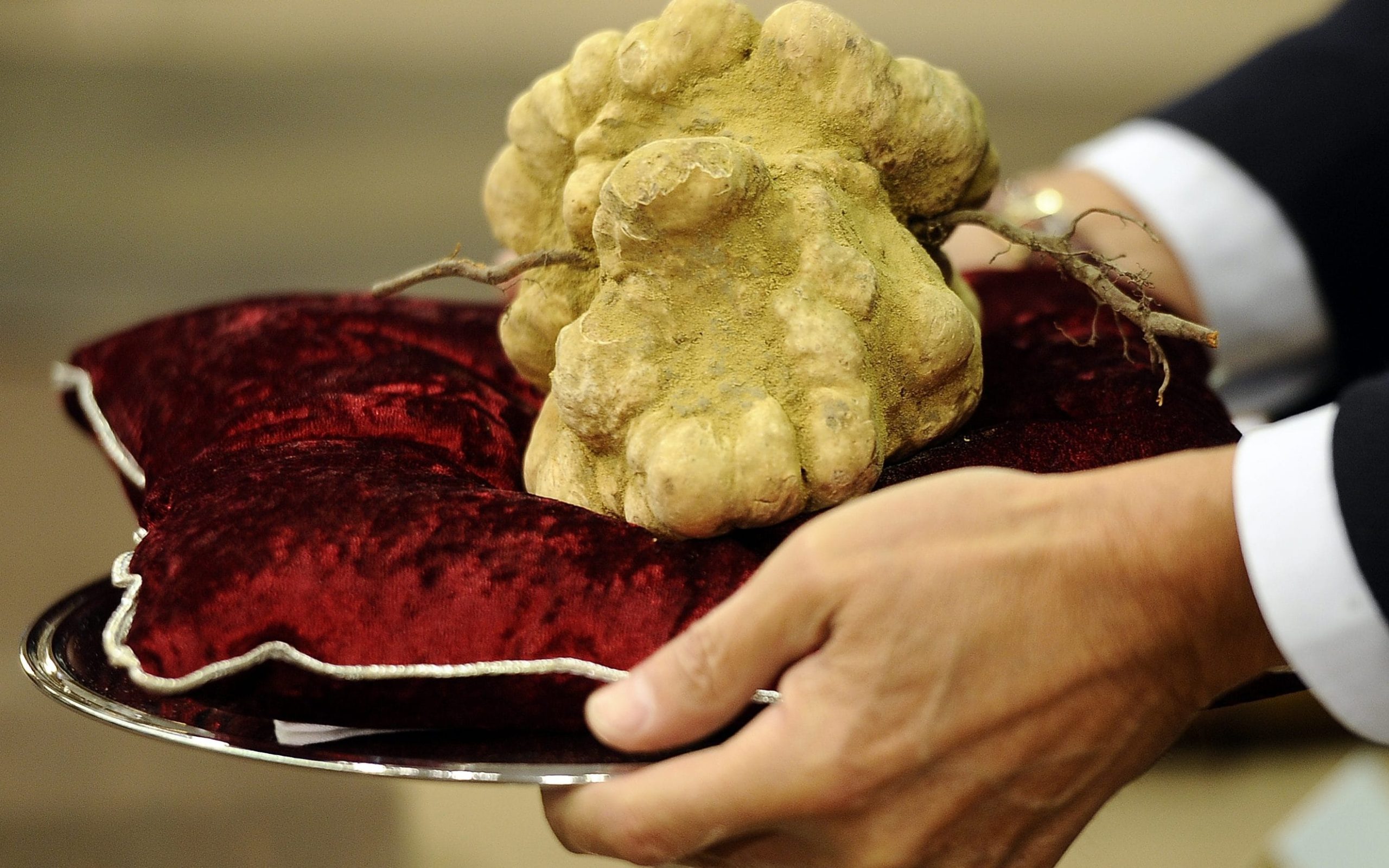
The most expensive foods in the world
Embarking on a culinary adventure that transcends the realms of everyday dining, some foods stand as a testament to luxury, exclusivity, and unparalleled indulgence. From rare ingredients to intricate preparation processes, these gastronomic delights are reserved for the elite who seek not just a meal but an extraordinary experience.
The Epitome of Opulence: A Culinary Journey Through the World’s Most Expensive Foods
Join us as we explore a curated list of the world’s most expensive foods that tantalize taste buds and leave wallets considerably lighter.
Blonde D’Aquitane Steak $3200 / cut
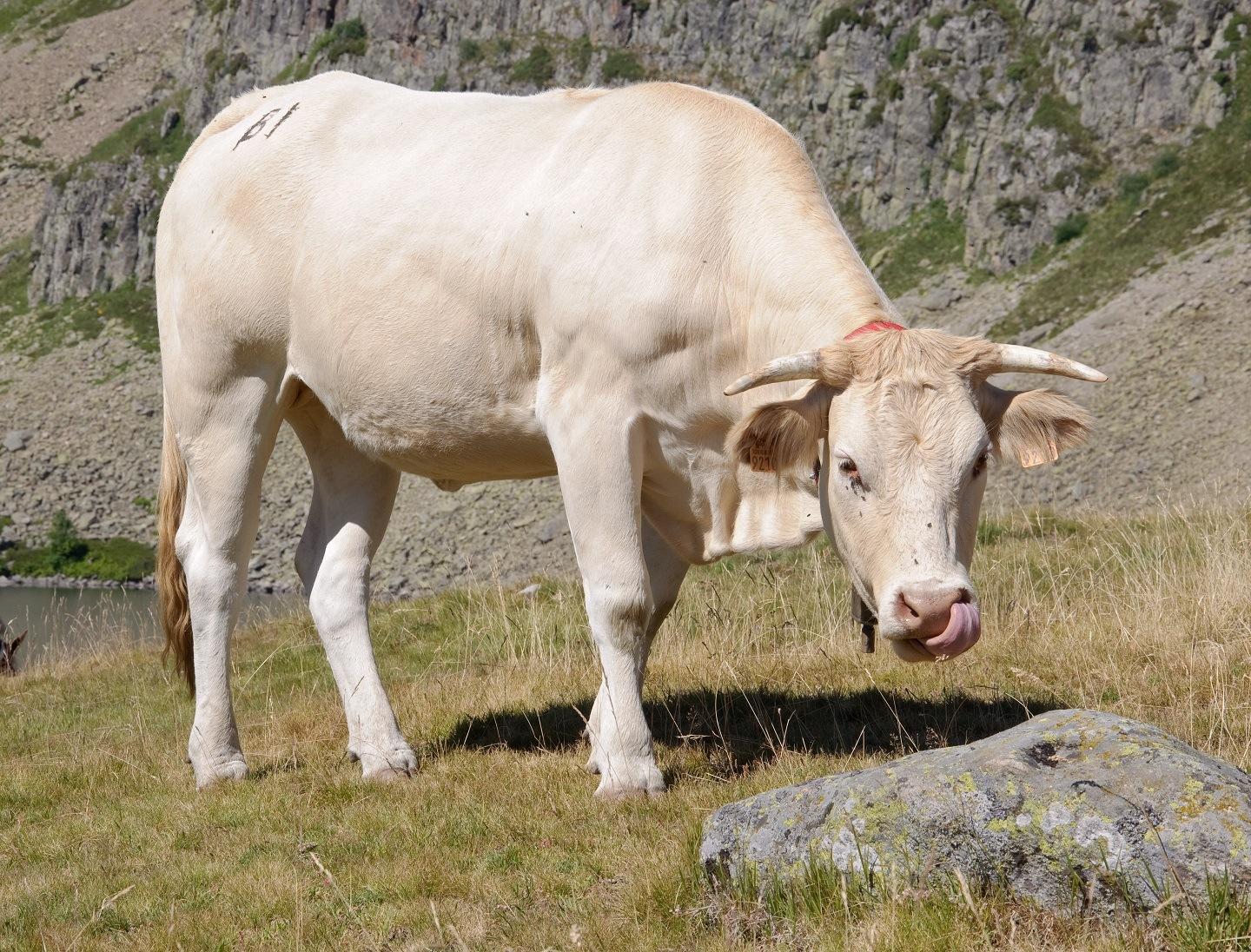
This rare beef is considered the most expensive steak in the world and you can expect to pay about $3200 for just 1 cut. The meat comes for prized, free range Blonde D’Aquitane cattle in North Eastern France. The cattle are hand reared and are free to roam the forests and grasslands of the French countryside. Only 4 are are slaughtered weekly. Each cow is slaughtered humanely to make the process as stress free as possible. The meat is sold for an average $3200 and to see if its really worth it, you’ll have to visit the Polmard store in Paris.
Saffron: Derived from the Crocus sativus flower, saffron holds the title of the world’s most expensive spice. Harvesting saffron is a labor-intensive process, as it requires the careful plucking of stigmas from thousands of flowers. The intense labor, coupled with the fact that each flower produces only a tiny amount of saffron, contributes to its high price tag. Used sparingly in dishes, saffron imparts a vibrant color and a unique flavor, making it a prized addition to various cuisines.
Kopi Luwak: Dubbed the world’s most expensive coffee, Kopi Luwak is made from coffee beans that have been eaten and excreted by a civet cat. The fermentation process in the civet’s digestive tract is believed to enhance the flavor of the beans. This rarity, coupled with the meticulous and labor-intensive production method, contributes to its exorbitant price. For those seeking a truly unique coffee experience, Kopi Luwak comes with a hefty price tag.
White Truffles:

Known as the “diamonds of the kitchen,” white truffles are a rare and highly sought-after fungus that grows underground in specific regions of Italy. Their earthy, pungent aroma and delicate flavor make them a delicacy among chefs and food enthusiasts. Priced at thousands of dollars per pound, these elusive fungi are often shaved over dishes like pasta or risotto, enhancing the culinary experience with their distinctive taste.
Japanese Wagyu Beef: Hailing from specific regions in Japan, Wagyu beef is renowned for its exceptional marbling, tenderness, and rich flavor. The cattle are raised with meticulous care, often receiving massages and a carefully regulated diet. The result is a cut of beef that melts in the mouth, elevating the dining experience to unparalleled heights. The scarcity of authentic Japanese Wagyu and the demand for its exquisite quality contribute to its premium price.
Almas Caviar

Caviar, often associated with luxury, reaches new heights with Almas caviar. Harvested from the eggs of the rare albino beluga sturgeon in the Caspian Sea, Almas caviar is notable for its distinct pale color and large, glossy beads. Served in a 24-karat gold tin, this caviar is a symbol of opulence, with prices reaching tens of thousands of dollars per kilogram.
Matsutake Mushrooms: Revered in Japanese cuisine, Matsutake mushrooms are highly prized for their distinctive aroma and flavor. Growing in specific types of forests and often requiring expert foraging, Matsutake mushrooms are rare and seasonal. Their scarcity, coupled with the difficulty of cultivation, contributes to their high market value, making them one of the world’s most expensive fungi.
Foie Gras: Foie gras, meaning “fatty liver” in French, is a delicacy made from the liver of a fattened duck or goose. The process involves force-feeding the birds to enlarge their livers, resulting in a rich and velvety texture. The labor-intensive and controversial production method, along with the limited availability of top-quality foie gras, places it among the priciest culinary delights, cherished by connoisseurs worldwide.
Yubari King Melons: Grown in the Yubari region of Hokkaido, Japan, Yubari King melons are celebrated for their perfect sweetness, juiciness, and unparalleled flavor. These meticulously cultivated melons are often sold at auction, fetching astronomical prices. The attention to detail in their cultivation, along with their limited availability, contributes to their status as one of the world’s most expensive fruits.
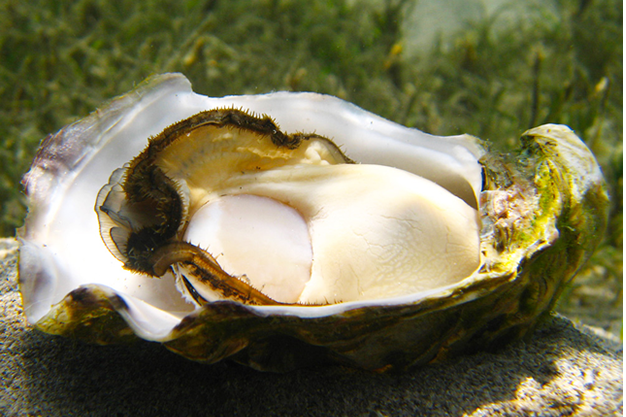 Coffin Bay King Oysters – $75
Coffin Bay King Oysters – $75
Grown exclusively on a farm in Australia, these wallet busting mullets come with a hefty price tag of about $75. Unlike the usual 18 months for standard oysters, the coffin bay oyster are grown for 6 years, and each oyster can weigh up to 2 pounds. They have up to 10 x more meat that other oysters. Their strong aroma and complex taste have earned them the nickname “the oyster steak of the ocean.
Birds Nest Soup -$100 per bowl 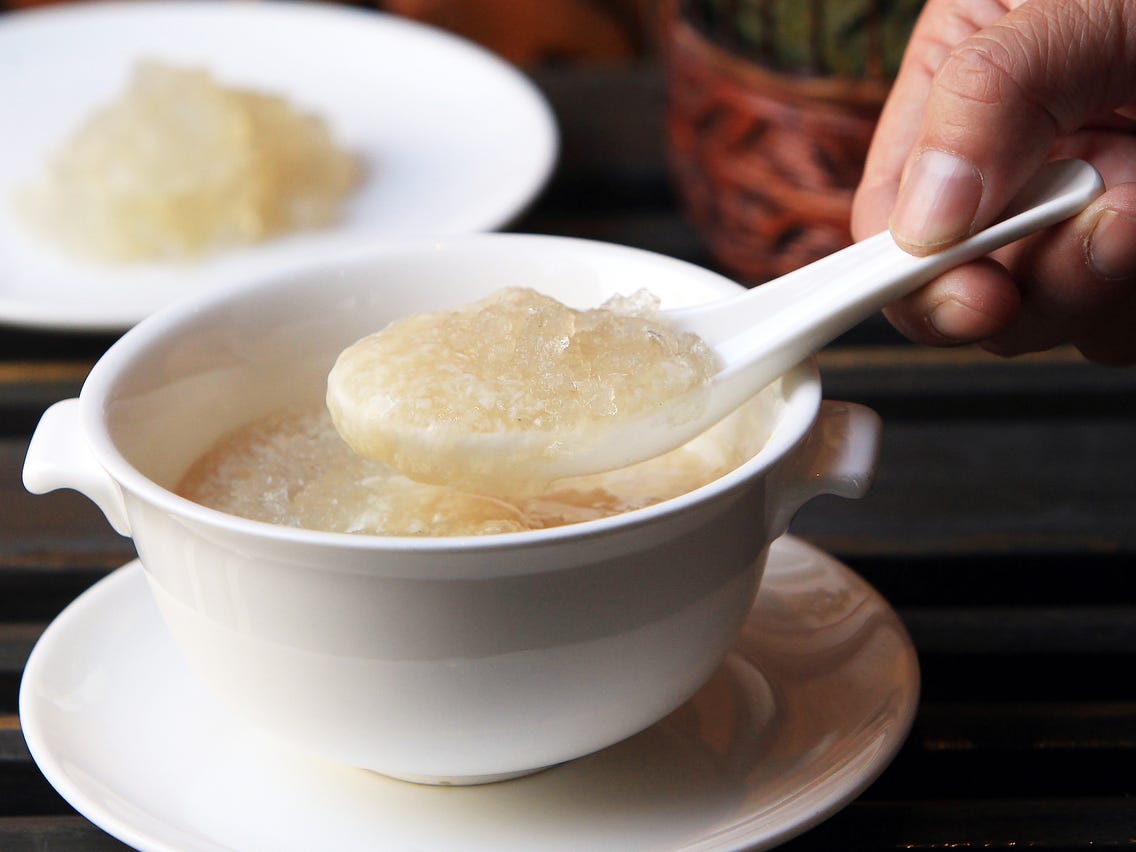
This is not just any birds nests, but the nests of Swallows of Swiflets which are made from 100% saliva. Swiftlets make their owns nests out of their own spit, which solidifies to form a comfortable nest for their eggs to hatch, but the nests make the best soup which is a rare delicacy in China, costing anywhere between $2500 and $10 000 per kilogram.
The delicate nest dissolves into a gelatinous texture when boiled in water to make a soup or sweet soup (tong sui). The $100 per bowl can be attributed to how hard the nest are to get.
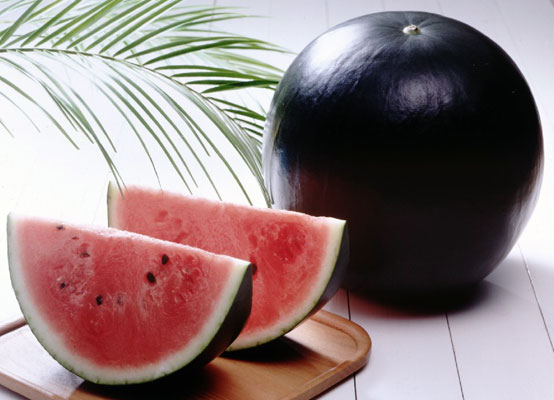 Densuke Black Watermelon $250 each
Densuke Black Watermelon $250 each
These watermelons are exclusively grown on the northern Island of Okaido in Japan. Besides their intriguingly dark outer appearance, they are said to have more crispier flesh, more juice and an enhanced sweetness compared to their overseas relatives. There demand for decorative fruit in Japan is huge and Densukes are a popular choice, purchased as expensive gifts. Depending on the size, they sell for an average $250.
Yubari King Melon $250 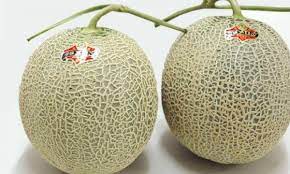
Grown excluseively on the Okaido island, the Yubari melon is a major status symbol for anyone with enough money to add one to their collection. What does one of these premium fruits taste of ? Apparently, they’re just have an ultra concentrated sweetness.
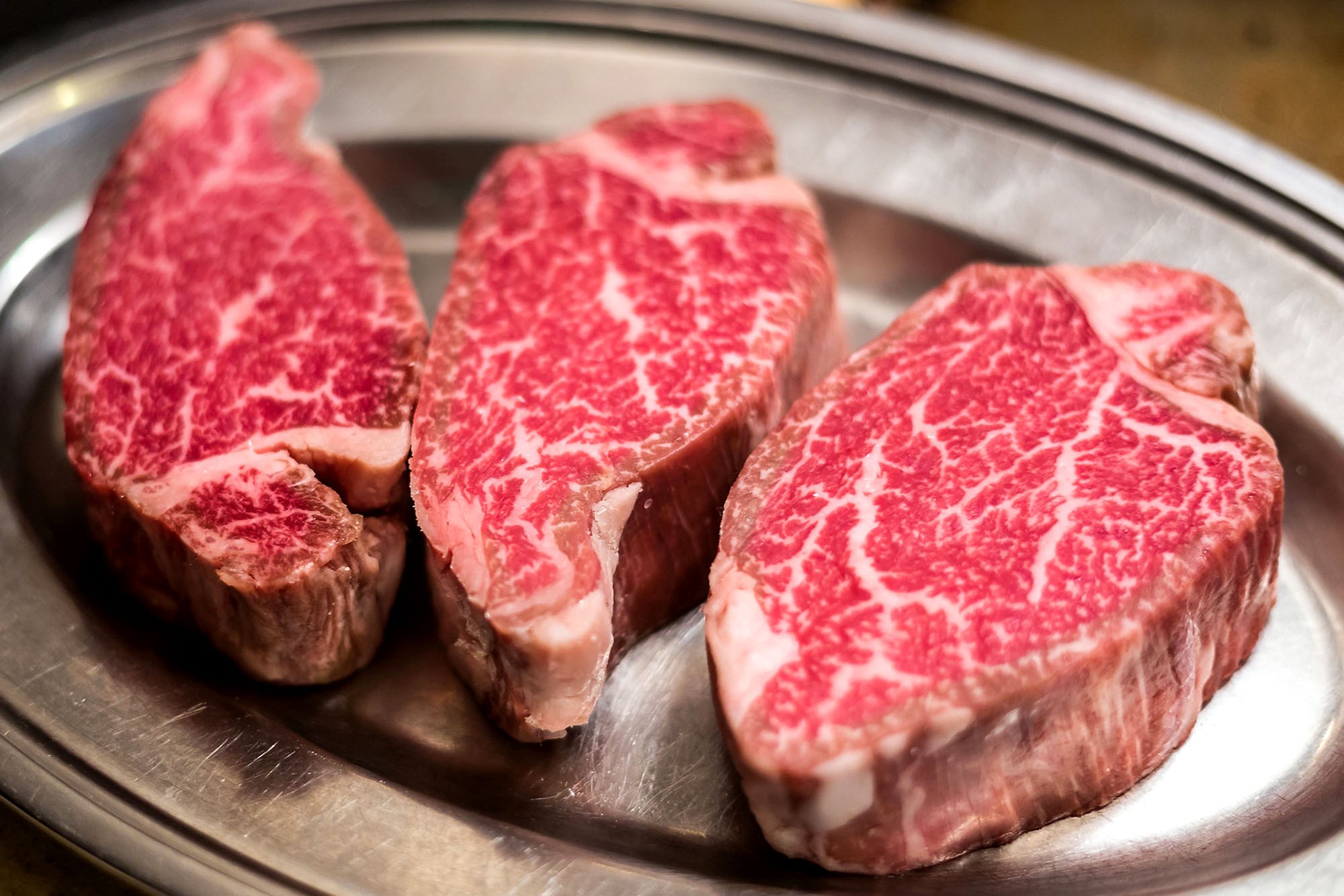 Kobe beef $661 / Kg
Kobe beef $661 / Kg
Steak makes a good main course but if you want a truly premium experience, there’s one kind that will do the job Kobe beef. These illustrious cuts are procured for the Tajima-Gyu breed of Japanese cattle which are raised in the Kobe region. The animals are so well esteemed and they live like kings. They are massaged daily, listen to classical music. Kobe beef is renowned for its superior flavours, tenderness and high amount of inner muscular fat, which contributes to its melt in the mouth qualities.
La Bonnote Potatoes $661 / kg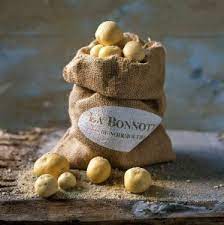
The potato is one of the most healthy foods around, but not when it comes to the sought after La Bonnote variety, aka “The worlds most expensive potato”. These spuds are so well regarded that they’re even know as “the Caviar of the potato world”. Why, you may ask ? Firstly they are grown almost exclusively on the tiny island of Nua Mote, of the coast of Western France, and only about 20 tonnes are produced yearly. Preparing them for sale is also an argous process because they are too delicate for machine harvesting. Each potato must be carefully handpicked instead. You might be wondering why La Bonnote potatoes are worth eating to begin with. Fans of the pricey spuds say the sea air and the sea water which acts as a fertiliser for the soil gives the potatoes a hint of sea salt as well as a lemoney flavor. If you fancy La Bonnotes for tea, you should know that they sell for about $661 / Kg.
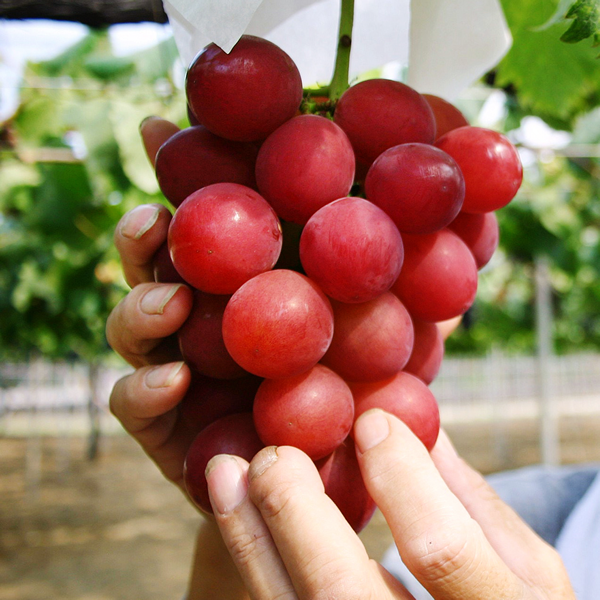 Ruby Roman Grapes $970 / bunch
Ruby Roman Grapes $970 / bunch
$370 / gram This rare variety is valued for its juiciness, high sugar content and low acidity. Thanks to years of selective breeding, they are about the size of ping pong balls. When they hit the market around 2008, 700grams Ruby Roman grapes bunches sold for an average $910 and their price has never gone down.
Donkey Cheese $1110 / Kilo 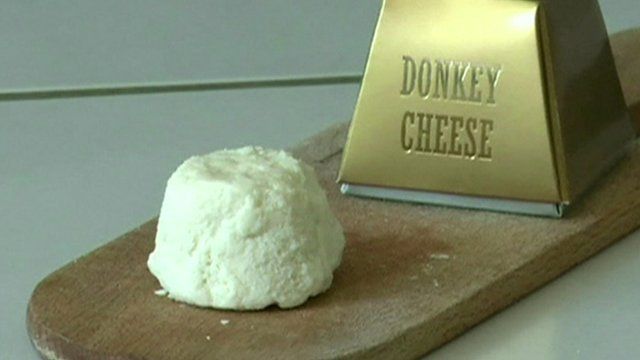
Believe it or not, there is such a thing as donkey cheese, otherwise known as “Pule” and it will cost you a pretty penny. This bizarre creation is only produced by farmer Sobodan Simic on his rural farm in Serbia with the help of some 300 donkeys from the Sasavican Nature reserve. It’s esteemed for its supposed healthy benefits with claims that it’s high in protein, calcium and omega 3 fatty acids. Getting milk from the donkeys isn’t easy because only about 20 animals produce it at a time and it takes 7 gallons of milk to make 1 pound of cheese. This is because the milk doesn’t contain enough casing, the characteristic that thickens it into curd. To make the cheese the traditional way. Thankfully, Simic has a secret method to make the cheese but it comes at a price, each kilo comes at about $1110.
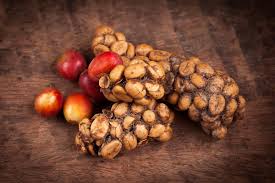 Kopi Luwak Coffee $1200
Kopi Luwak Coffee $1200
Legend has it the this highly valued coffee was first discovered in Indonesia under Dutch colonial rule. Native farmers and plantation workers were forbidden from harvesting the coffee for their own consumption. To this day, vendors of Kopi Luwak coffee anywhere in the world can ask for between $250 to $1200.
Ayam Cemani Black Chicken 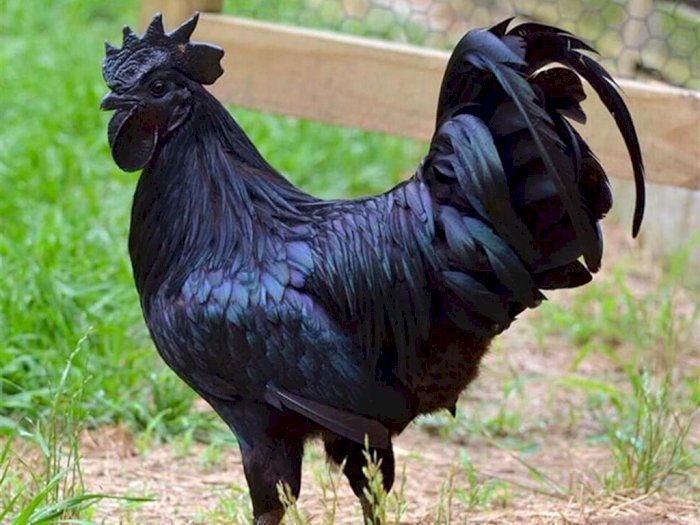
The Ayam Cemani chicken which hails from Indonesia isn’t just coated with black feathers, it’s black on the inside too. This type of chicken grows at a slightly lower rate than most chickens and supposedly takes better than your everyday kind. Its blood is also rumoured to bring wealth and power to those who consume it, making it a sought after good luck charm in certain cultures. The asking price can be up to $2000 for a single bird and $200 for a single new born chick.
Conclusion:
The world’s most expensive foods embody more than just exquisite flavors; they represent a fusion of art, craftsmanship, and exclusivity. From rare truffles to meticulously produced coffee and luxurious caviar, these culinary treasures offer a glimpse into a world where gastronomy becomes a lavish expression of opulence and indulgence. For those with discerning palates and a taste for the extraordinary, these delicacies stand as a testament to the heights that culinary excellence can reach.


